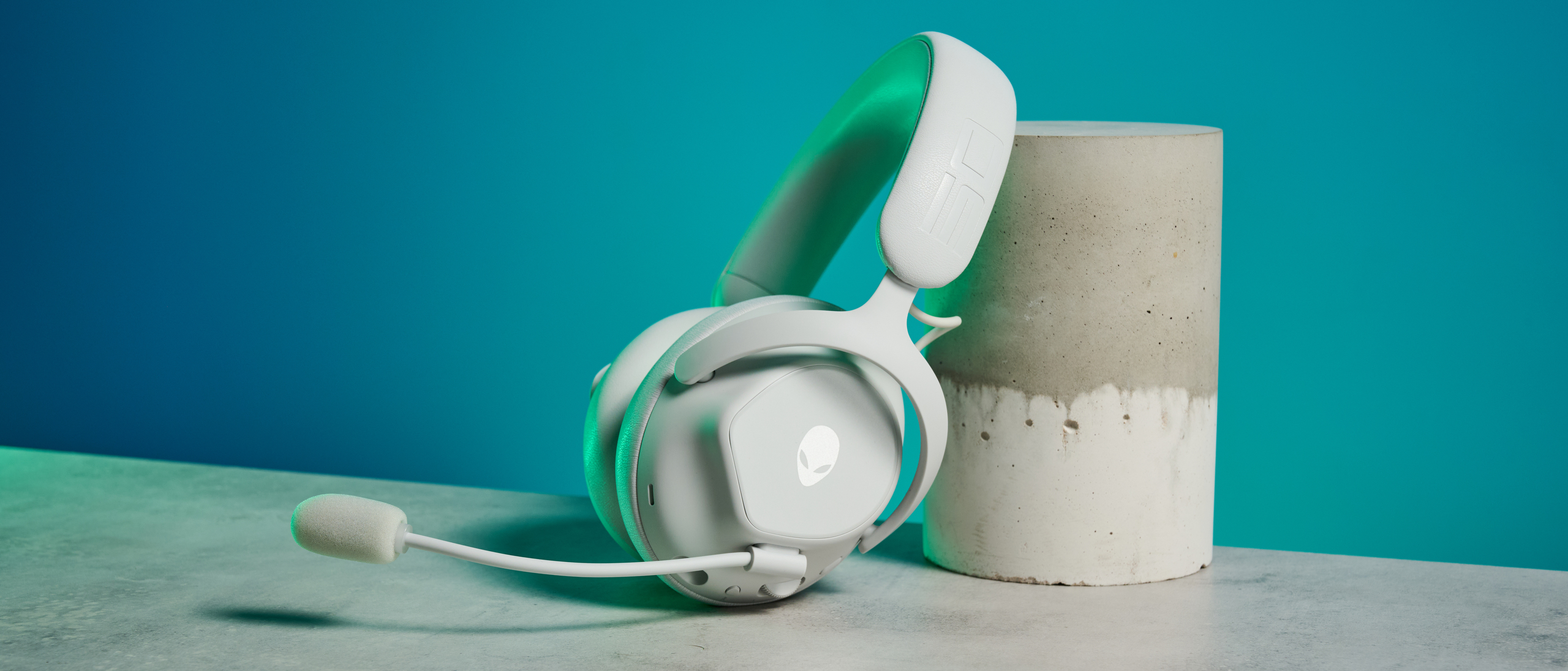Best foldable phones of 2025
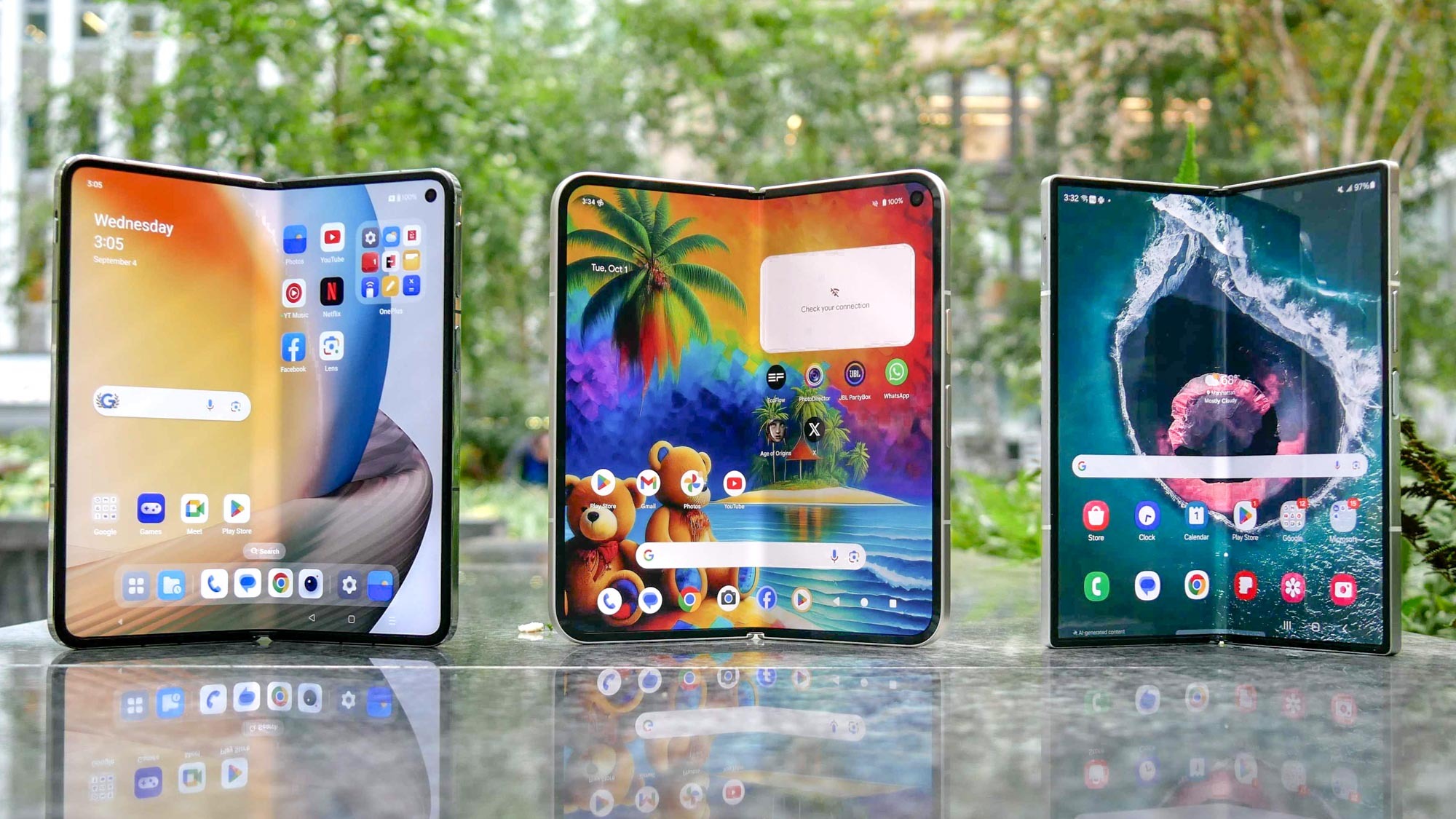
I have been writing about phones for a while now, and honestly, I am always astounded by how foldable phones have changed in recent years. While foldables might have started as something of a gimmick, they have shot up in quality over recent years.
However, this improvement is something of a double-edged sword, as it means that there are more and more models to choose from. This can make it harder than ever to find the best device for you and to know what to look for in the first place. But I and the rest of the Tom’s Guide phones team have reviewed and tested all of these devices, learning that it's the little things that really make a great foldable phone.
When it comes to the best foldable phone, there's a lot to look at, but all of my favorites share something that makes them special. After several valiant efforts, the Samsung Galaxy Z Flip 7 lands in our top spot for the bigger upgrades it gets this time, like its larger Flex Window display, sturdier construction, and support for Samsung DeX.
It's a surprising change after the Motorola Razr Ultra (2025) held the top spot for a while, but it's still proves to be an endurance champ with its long battery life. Other new additions include the Galaxy Z Fold 7, which takes foldable designs to a new level with its thin construction, along with the Google Pixel 10 Pro with its impressive AI features and zoom camera performance.
As 2026 draws near, we expect to see limited movement in this list for the next few months, as the biggest foldable launches tend to happen toward the middle of the year. The only exception is the Galaxy Z TriFold, which should be coming to U.S. markets at some point with a unique three-panel design.

I'm the senior editor for mobile at Tom's Guide, where I've been working since 2023. I've been covering mobile tech for 16 years in total, reviewing early foldables like the Kyocera Echo and Sony Tablet P. While those early models got me excited for foldable phones, it took several years before the best foldable phones were perfected. Not only do they have interesting form factors, but foldable phones have extra utility you don't quite get in your typical slate phone; like how they're better vlogging by folding them over to use their rear cameras while seeing yourself on the display.
The Quick List
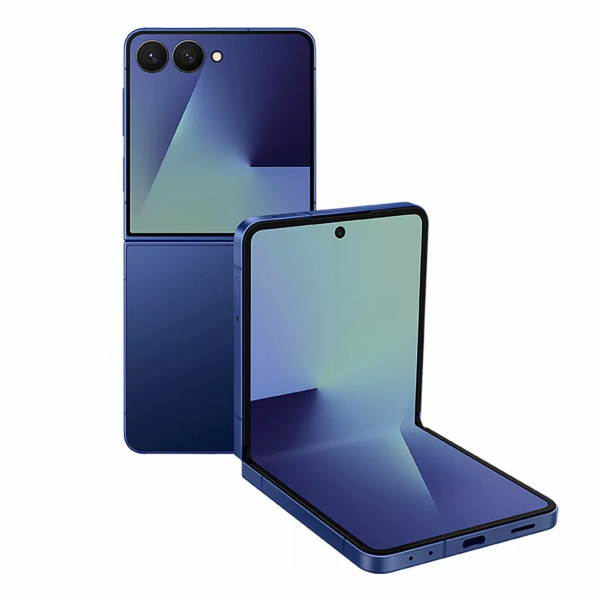
With bigger upgrades than years past, the Galaxy Z Flip 7 is the best foldable phone you can buy with bigger upgrades like a larger outer screen, multimodal AI experience, longer battery life, and Samsung DeX support.
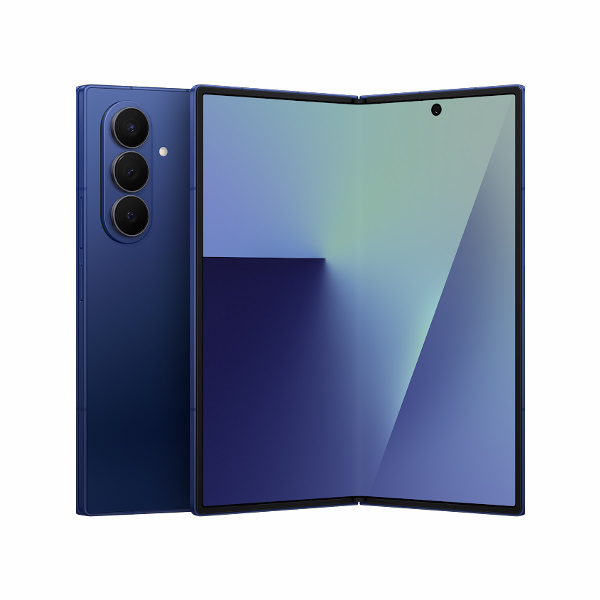
Not only does it get a big makeover with its thin design, but the Galaxy Z Fold 7 gets ultra-level cameras with its brand new 200MP main shooter.
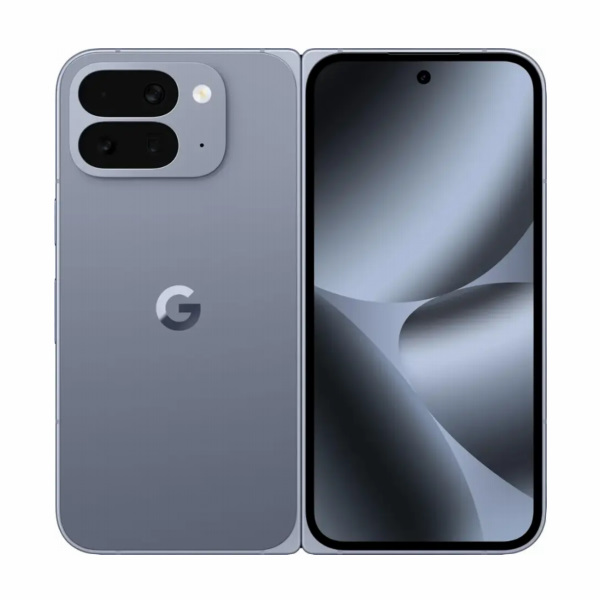
The Pixel 10 Pro Fold is a much more satisfying foldable than its predecessor, complete with more AI features that make it a breeze to edit photos like a champ and a durable new design.
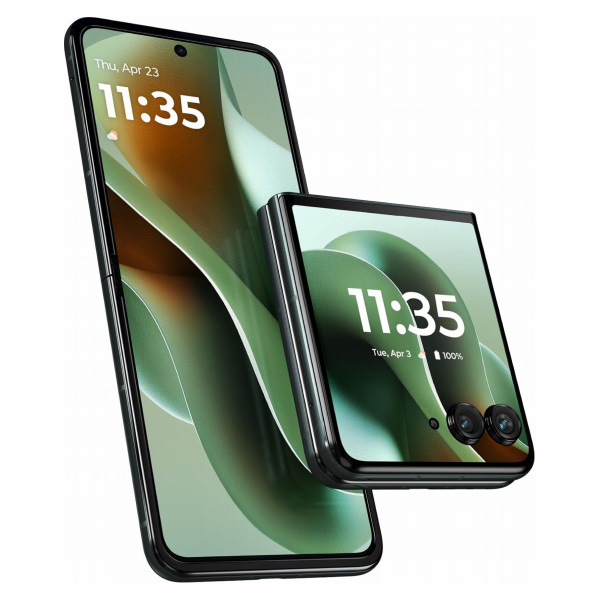
Motorola's foldable lineup expands this year with the addition of the Razr Ultra 2025. It's priced higher than previous models, but it's backed by a massive battery, flagship caliber chipset, and Moto AI tools that put it into the AI conversation.
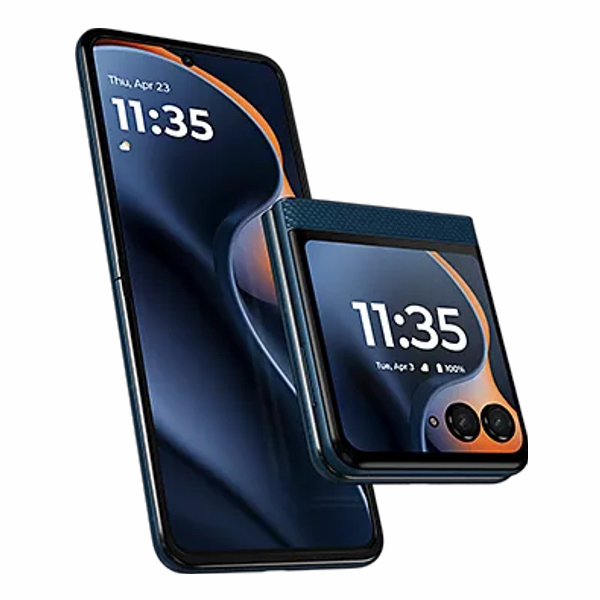
This year's model continues to prove it's the best cheap foldable phone around, as the Motorola Razr 2025 gets its usual hardware upgrades, while remaining at the same affordable cost as before.

Despite being almost two years old, the OnePlus Open does multitasking better than any other phone thanks to Open Canvas. Once you've experienced it, you can't go back to anything else.
The best foldable phones you can buy today
Why you can trust Tom's Guide
Best foldable phone overall
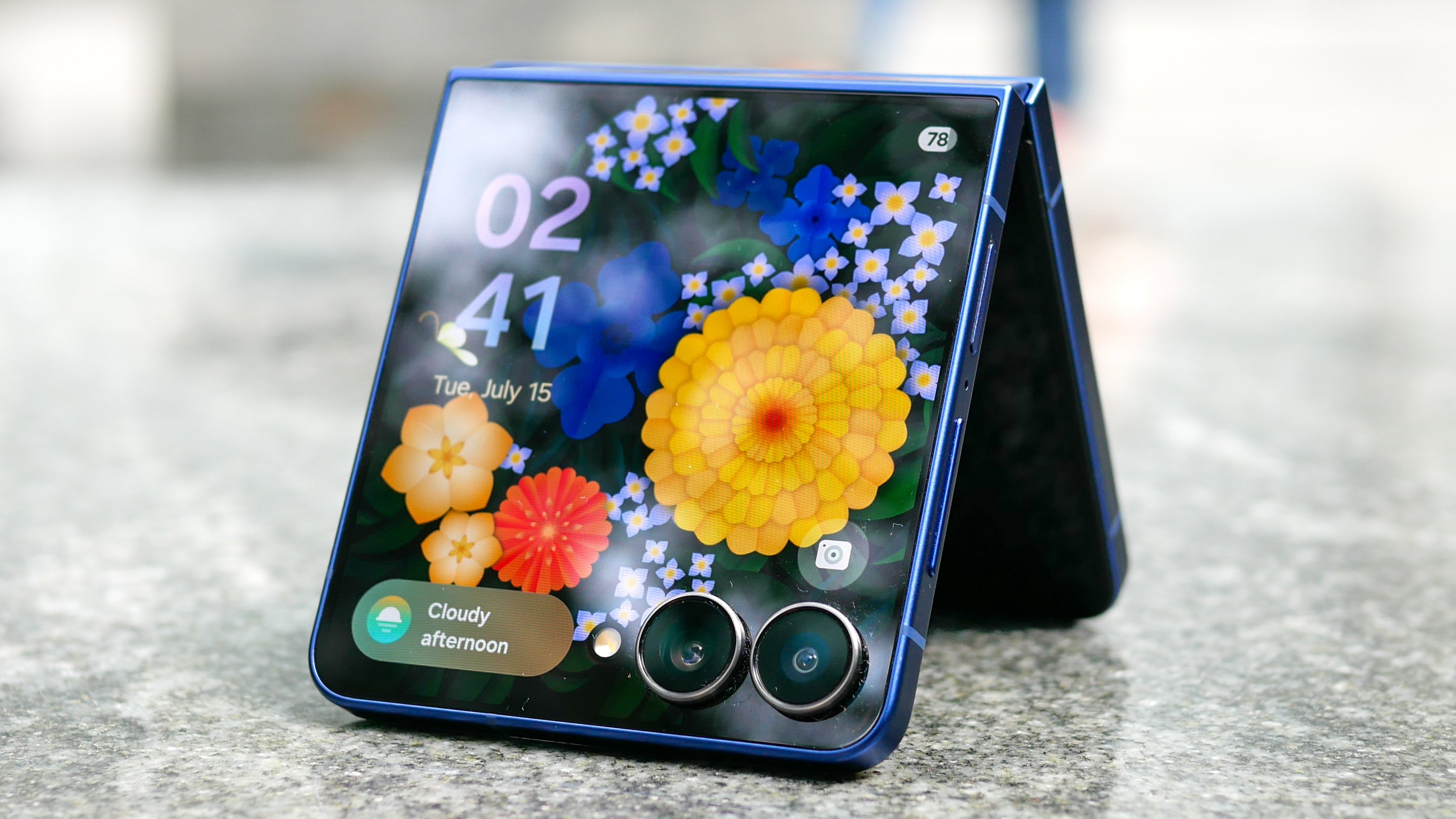

Specifications
Reasons to buy
Reasons to avoid
After falling short the last couple of years trailing Motorola, Samsung makes a stunning return to the top with the Galaxy Z Flip 7. All of this is due to the bigger hardware upgrades it's been given over previous years, along with a strong emphasis on the software. You get an incredibly powerful foldable phone without any price increase.
First and foremost, its larger 4.1-inch Flex Window display stretches from edge-to-edge, which I really enjoy using when paired with its rear cameras to capture selfies and record vlogs — which also helps when its main 50MP camera works well under different conditions.
In my Galaxy Z Flip 7 vs Razr Ultra (2025) photo shootout, I mention how low light continues to be a strong category for the Z Flip 7. Not only does it produce brighter images, but also more detail. Any camera enthusiast will also appreciate the rich camera software it offers, thanks to its manual modes.
Samsung also finally brings DeX support to the Z Flip series for the first time, and I cannot tell you how it's long overdue. It simply adds more to its package with that desktop PC-like experience when I connect it to an external monitor. And lastly, you get the full AI experience thanks to its new Galaxy AI features and the multimodal AI experience of Gemini Live.
Read our full Samsung Galaxy Z Flip 7 review.
Best camera foldable phone
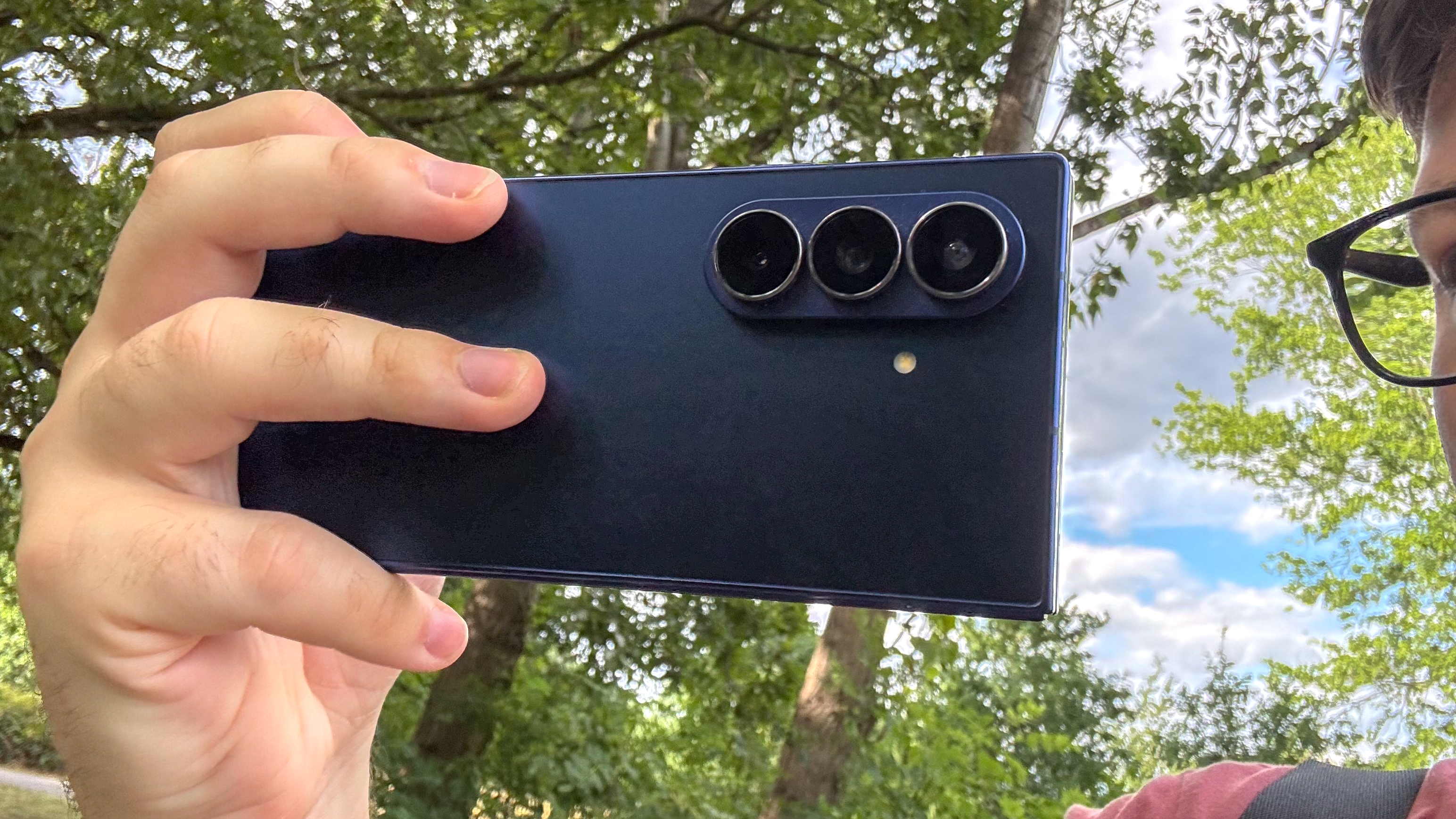

Specifications
Reasons to buy
Reasons to avoid
Notebook style foldable phones aren't known for their pocketable sizes. Yet, the Galaxy Z Fold 7 is a work of art sporting an unbelievable thin construction that's skinnier than most slate phones.
What's equally as remarkable is the main camera it's been given, a 200MP sensor that's matched only by the Galaxy S25 Ultra. It makes such a difference because of how good it performs under broad conditions. From capturing portraits with incredible detail, to how it brightens shots under low light, it's the foldable phone known for its cameras.
Still not convinced about how it's one of the best camera phones around? My colleague Richard Priday compared it to last year's Z Fold 6 to uncover any differences.
But it doesn't stop there because just like the Z Flip 7, the Z Fold 7 has a robust camera interface — like pro video that lets you tune many of the settings. My colleague Mark Spoonauer was really impressed by the macro performance from its 40MP ultrawide camera, while its support for 8K video recording gives extra room for creativity.
Beyond the camera, the Galaxy Z Fold 7 is one powerhouse of a foldable phone backed by its fast Snapdragon 8 Elite performance, brilliant looking displays, and more AI features that have been optimized for the foldable form factor.
And if the Z Fold 7 isn't enough foldable for you, then you can look forward to Samsung officially launching the Galaxy Z TriFold in 2026. It'll only be available in limited markets, and likely cost a lot even for a foldable, but aside from some Chinese competition that isn't sold in the U.S., it's looking like a completely unique experience.
Read our full Samsung Galaxy Z Fold 7 review.
Best AI foldable phone
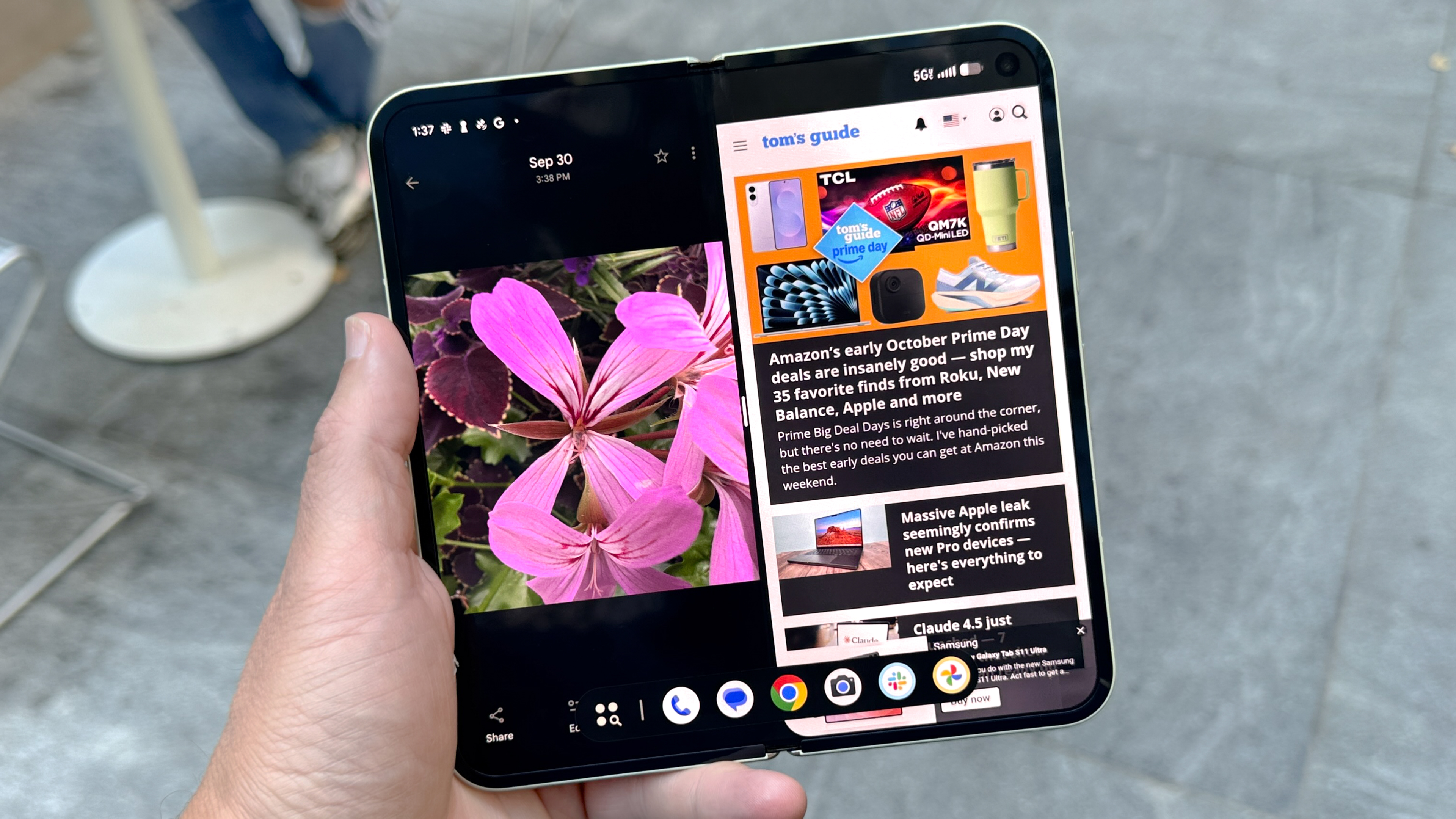
Specifications
Reasons to buy
Reasons to avoid
Google's foldable game has made a massive leap in quality with the Pixel 10 Pro Fold, especially with its IP68 rating — a first amongst notebook style foldable phones. There’s a lot more to love about the Pixel 10 Pro Fold, including how it continues to have one of the brightest displays on a foldable that we've tested.
In my colleague's Pixel 10 Pro Fold review, Mark mentioned how it's a "versatile foldable phone with impressively vibrant displays, a durable design and better battery life than the Samsung Galaxy Z Fold 7 for $200 less." He also goes on to praise the new AI features that Google introduces with the phone, like Auto Best Take and Magic Cue.
Google also introduces several more AI tools that lean on generative AI for help. For example, you can use Ask Photos to easily make complex photo edits by simply speaking or describing what changes you want to make. Over on the productivity side, Google improves the way it handles multi-tasking by dynamically shifting the layout of an app in split screen mode.
Other advantages it has over the Galaxy Z Fold 7 include its powerful 5x telephoto zoom camera and its much longer battery life. Considering it's $200 less than its rival, it certainly proves it has a ton of value.
Read our full Google Pixel 10 Pro Fold review.
Best foldable phone battery life

Specifications
Reasons to buy
Reasons to avoid
Motorola remains in the best foldable phones discussion thanks in part to how the Razr Ultra 2025 takes flip phones to a new level — putting it into flagship territory for the sheer amount of upgrades it packs. While its overall design language remains the same, a new titanium reinforced hinge and more color options makes it feel incredibly sturdy. And yes, it still has an outer screen that's much larger than other devices.
It's not just the screens where the Motorola Razr Ultra 2025 excels. I'm glad that Motorola reverts to a more logical dual-camera setup that ditches the telephoto camera of the previous Razr Plus 2024 and swaps it in for a 50MP ultrawide paired with the 50MP main sensor.
What's even more impressive about the design is that it isn't any larger or heavier, but somehow Moto's able to cram in a bigger 4,700 mAh battery that makes it the longest lasting foldable phone that I've tested. On top of that, the Snapdragon 8 Elite effectively makes it the most powerful flip phone too.
There's also a substantial improvement to the software experience, as Moto AI is properly available from the start. Even though its toolset isn't as robust as the Pixel 10 Pro Fold or Galaxy Z Fold 7, it's a marked improvement over previous Razrs. The only downside here is that you're paying much more now for all of these benefits, plus it has a short 3 years of software support.
Read our full Motorola Razr Ultra 2025 review.
Best cheap foldable phone
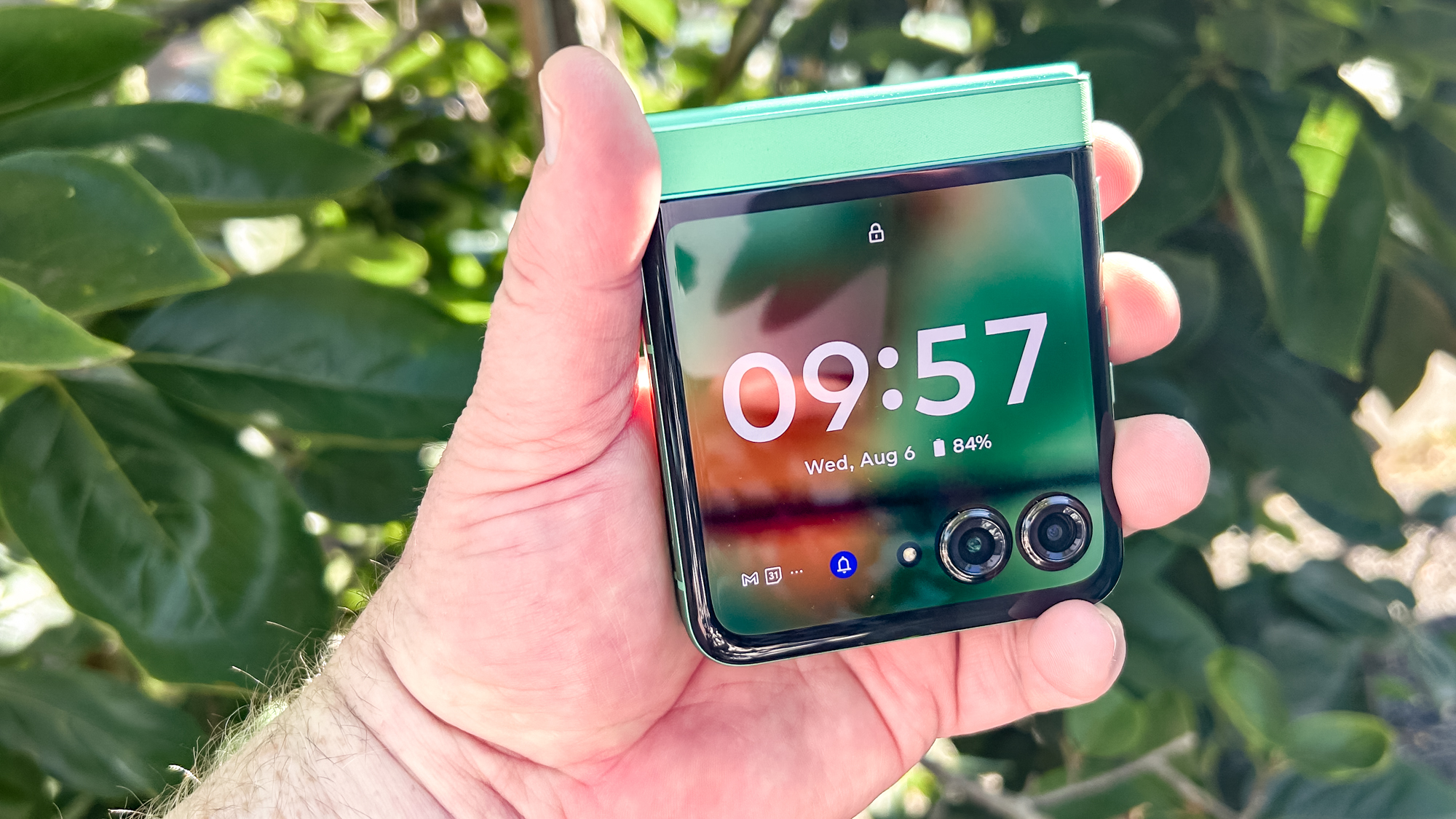
Specifications
Reasons to buy
Reasons to avoid
Motorola has long proven that foldable phones can be cheap. With this year's iteration, the Razr (2025) continues to prove it's the best cheap foldable around with its hardware and software upgrades — all while still keeping its price under $700
Although the design remains unchanged for the most part, the brighter color options give the flip-style phone a bit of charm. With its flip-phone design, it feels incredibly well built, including its hinge. If that's not enough, the design is also IP48 rated to give it some water and dust resistance.
Despite the subpar benchmark performance scores from its MediaTek Dimensity 7400X chip, my colleague Philip Michaels says that "in real word use, the Dimensity 7400X performs well enough." Additionally, it also helps that Motorola gives it the same Moto AI features that come with the pricier Plus and Ultra models.
There's been improvements to the camera's image processing algorithms that boost it over last year's model. Everything captured by its dual cameras look better, but it's also help that you can practically use the outer screen for selfies. When you get all of this in a package under $700, it's hard to overlook the Razr (2025).
Read our full Motorola Razr (2025) review.
Best foldable phone for multitasking
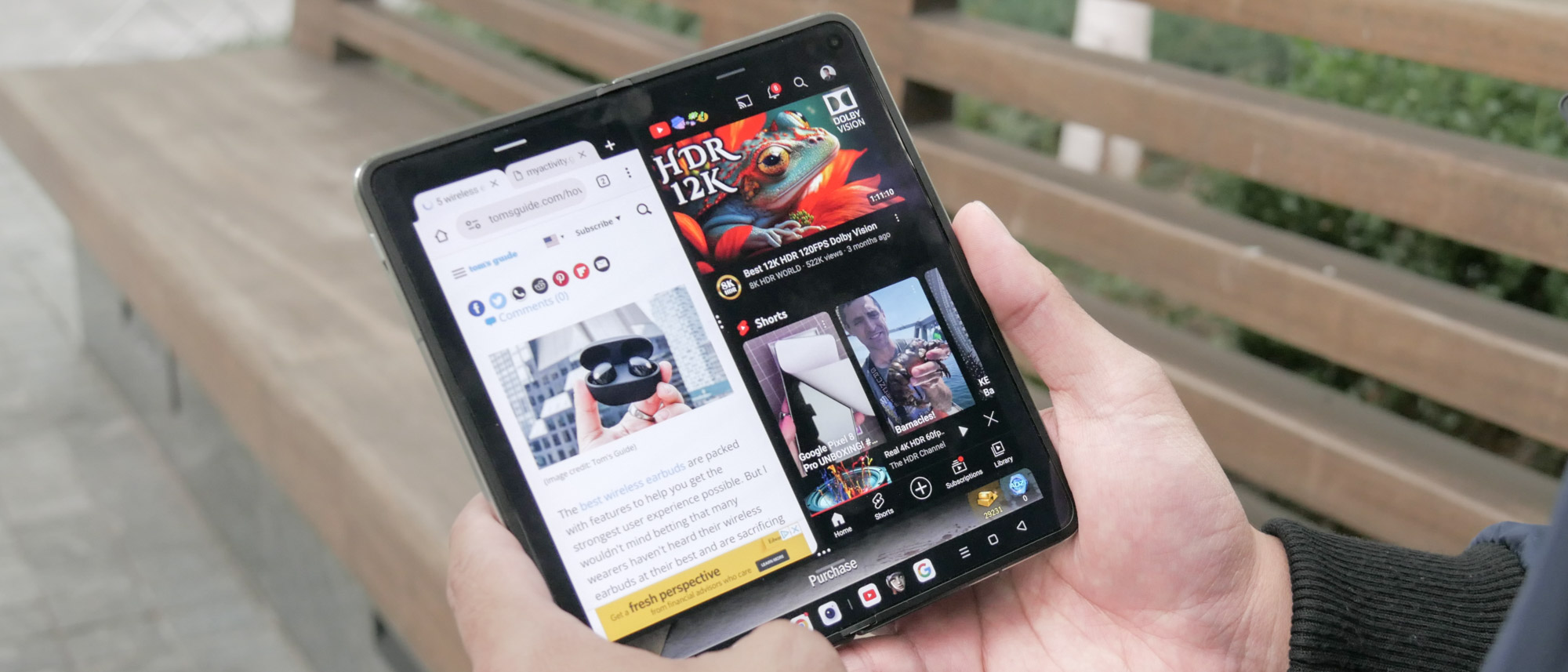

Specifications
Reasons to buy
Reasons to avoid
As our best overall foldable, there is a lot to love about the OnePlus Open, which we hope to see recreated in the OnePlus Open 2. When I reviewed the OnePlus Open, I said that the phone should be “a wakeup call for everyone.” Considering how it's OnePlus' first try at a foldable phone, it's really compelling how it still holds up today.
OnePlus tried to put in as much as it could in this device, including some impressive cameras. If you want to go even further then you could grab the OnePlus Open Apex Edition. Compared to the base model the Apex Edition boosts the storage and adds pretty cool AI cutout features to make stickers from any photo you take. It also features a VIP mode that lets you turn off the camera and microphone for a little extra privacy.
Regardless of which model you pick the phone comes with everything you could want. Both models feature the same thin and light design, including the its dynamic Open Canvas multitasking that actually is intuitive to use. I can't believe it took this long for someone to come out with a functional way to handle multitasking, but it sets the bar because of how the screen dynamically adapts to show upwards of three apps at once.
Aside from the multitasking, it also has an amazing battery life (which is great when watching series on some of the best streaming services) and the chance for a pretty good trade-in deal. However, no phone is perfect as the lack of wireless charging might be a turn-off for some and the camera isn’t amazing in low light.
Read our full OnePlus Open review.
What to look for in a foldable phone
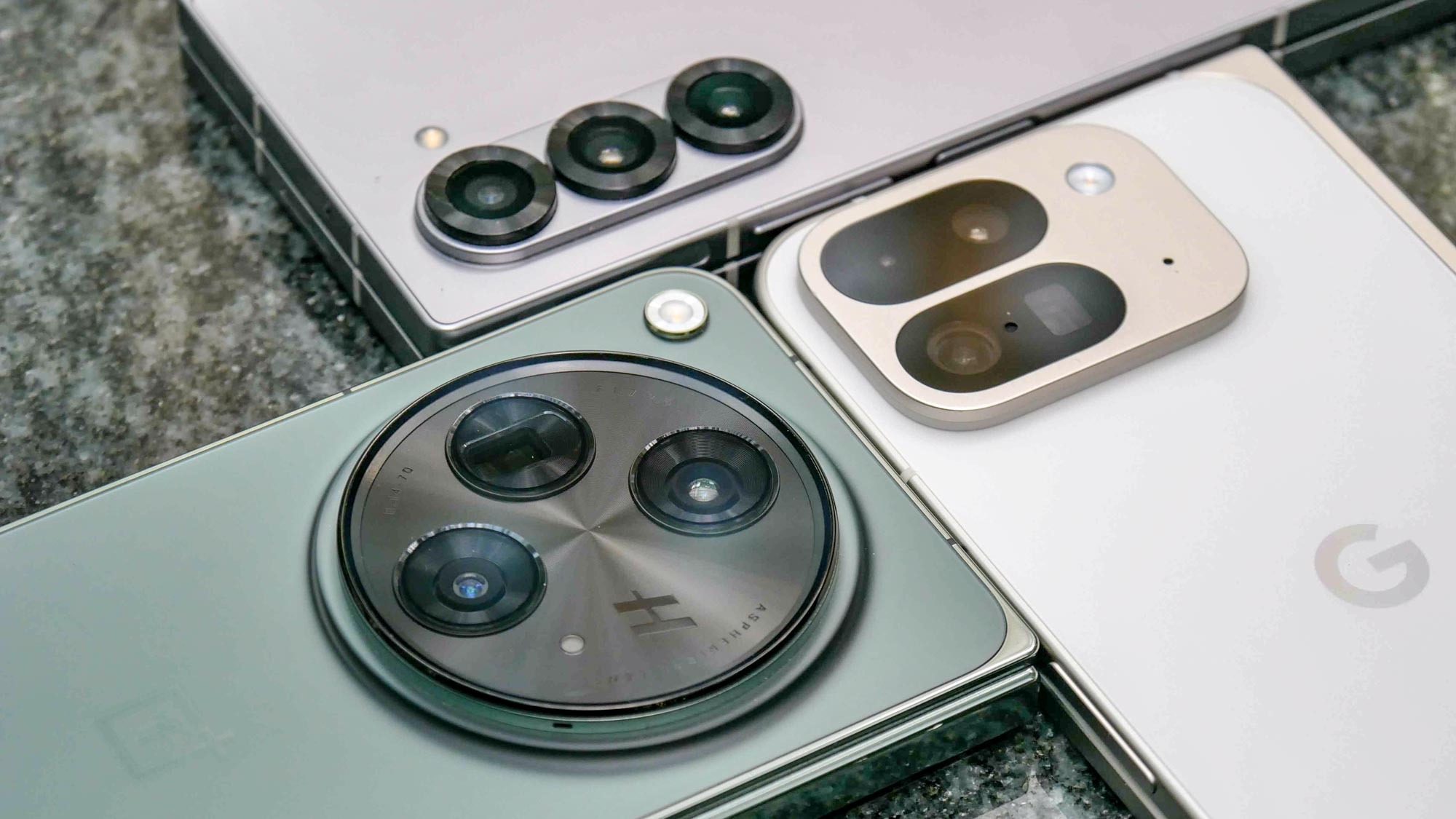
Before you buy a foldable phone, you'll need to consider what that kind of device will be able to do for you that a standard phone can't. With the exception of the $699 Motorola Razr, most foldables still cost $1,000 or more. Unless you really need the extra screen real estate, you may be better off with a phablet or one of the other best big phones that we've tested.
If you do think a foldable phone will help you get more done, though, be sure to pay attention to the device's construction. Early foldable phones like the Galaxy Fold and original Motorola Razr had design quirks that led us to pan those handsets. With the Galaxy Z Fold 2 in 2020, though, Samsung made some critical changes that made the phone more likely to withstand everyday use, and that work has continued with subsequent models. After adding water-resistance to the Galaxy Z Fold 3, Samsung worked on a lighter, slimmer hinge for its latest foldables like the Galaxy Z Fold 7 and Z Flip 7.
There are two screens to consider when buying a foldable phone — the larger internal display and a secondary screen, usually on the outside of the device. Find out just what you can do with that exterior screen — can you run full apps or is it just there for notifications and a few other features? And does the screen support something like Samsung's continuity feature where the app you're using on the cover screen is waiting for you when you open the device?
Apart from size — you'll want to make sure a closed foldable phone is something you're comfortable carrying around — you're looking at a lot of the same criteria you'd use to judge conventional phones. That includes the processor, cameras and — especially — the battery life. After all, there are usually multiple screens to keep powered up on a foldable phone.
How we test foldable phones
We test for the best foldable phones the same way we review any smartphone. (See our look at how Tom's Guide tests and review smartphones for a more detailed explanation of our process.) We conduct lab tests, including synthetic benchmarks as Geekbench 5 and 3DMark Wild Life Unlimited to measure graphics performance. We also run a real-world video transcoding test on each phone using the Adobe Premiere Rush app and time the result.
| Row 0 - Cell 0 | Geekbench (single-core / multicore) | 3DMark Wild Life Unlimited (FPS) | Adobe Rush Premiere (minutes, seconds) |
Samsung Galaxy Z Flip 7 | 2286 / 8079 | 114.64 | 1:04 |
Samsung Galaxy Z Fold 7 | 3,052 / 9,735 | 123.83 | 0:52 |
Google Pixel 10 Pro Fold | 2,335 / 6,332 | 79.68 | 2:18 |
Motorola Razr Ultra 2025 | 2,719 / 8,342 | 145.32 | 0:59 |
Motorola Razr 2025 | 1,089 / 3,075 | 22.18 | 1:21 |
OnePlus Open | 1,087 / 4,203 | 84.8 | 1:08 |
To measure the quality of a phone's display, we perform lab tests to determine the brightness of the panel (in nits), as well as how colorful each screen is (DCI-P3 color gamut). In these cases, higher numbers are better. We also measure the color accuracy of each panel with a Delta-E rating, where lower numbers are better and a score of 0 is perfect.
| Row 0 - Cell 0 | Brightness(nits) | DCI-P3 (%) | Delta-E |
Samsung Galaxy Z Flip 7 | 1,989 | 107.4 (Vivid) / 89.8 (Natural) | 0.23 (Vivid) / 0.23 (Natural) |
Samsung Galaxy Z Fold 7 | 2,310 | 105.2% (Vivid) / 96%(Natural) | 0.28 (Vivid) / 0.22 (Natural) |
Google Pixel 10 Pro Fold | 2,566 | 86.5% (Adaptive) / 74% (Natural) | 0.34 (Adaptive) / 0.25 (Natural) |
Motorola Razr Ultra 2025 | 1,835 | 151.8 (Vivid) / 123.2 (Natural) | 0.33 (Vivid) / 0.26 (Natural) |
Motorola Razr 2025 | 1,916 | 146.8 (Vivid) / 91.8 (Natural) | 0.34 (Vivid) /0.21 (Natural) |
OnePlus Open | 1,158 | 79.2 (Natural), 76.6 (Pro), 120.2 (Vivid) | 0.14 (natural), 0.17 (Pro), 0.29 (Vivid) |
We run a custom battery test in which we have the phone surf the web over cellular with its screen set to 150 nits of brightness. We then time how long it takes the phone to run out of power. For foldable phones, we conduct this test on the phone's main display.
| Row 0 - Cell 0 | Battery Life (hours:minutes) | Recharge level at 15 minutes (%) | Recharge level at 30 minutes (%) |
Samsung Galaxy Z Flip 7 | 12:24 | 29% | 55% |
Samsung Galaxy Z Fold 7 | 10:55 | 28% | 64% |
Google Pixel 10 Pro Fold | 12:16 | 28% | 58% |
Motorola Razr Ultra 2025 | 15:42 | 40% | 72% |
Motorola Razr 2025 | 13:36 | 21% | 42% |
OnePlus Open | 12:07 | 50% | 85% |
We also test the cameras on each foldable phone, taking them out into the field to perform comparative shots, usually with another device that features comparable specs. In some cases, that's a foldable phone or another device in the same price tier.
How to choose a foldable phone?
Choosing the best foldable phones boils down to two things: the features matter most to you and your budget.
Notebook style foldable phones, like the OnePlus Open and Google Pixel 10 Pro Fold, offer the most suitable productivity experience thanks to their expansive displays. For example, you can run about 2 to 3 apps simultaneously. Want something that's more portable and versatility for content creating? Then perhaps flip phone foldables are better for you, like the Galaxy Z Flip 7 or Motorola Razr Ultra 2025, which make it easy to use their superior rear cameras with their outer screens.
Now, if your budget is a lot tighter, there are still options for you. There are still very few budget foldable phones, but the Motorola Razr 2025 is a steal for $699 given what it offers.
And finally, do you want the ultimate foldable phone that can replace your laptop? The Samsung Galaxy Z Fold 7 and Z Flip 7 offer a desktop PC-like experience with Samsung DeX, along with the Pixel 10 Pro Fold with its hidden Android 16 desktop mode. Plug it into a monitor, pair a mouse and keyboard to it, and then you'll have the ultimate on-the-go laptop replacement.
Is it worth getting a foldable phone?
It entirely depends on what you look for in a device and your average use. For the most part, foldable phones don’t do much differently from other devices when it comes to communication, they still call and text like any other phone after all. However, their strength comes from the larger display and the opportunity that presents. So, if you are someone who likes to watch a lot of videos or read on your phone, then it could be a solid investment, but the price might turn away the average user. Flip phones are a bit more complicated, as they usually have the same size inner display as your average phone. Their strength comes from how small they can be, so if you want a space saver that’s still got all the modern features, then this is the type for you.
Do foldable phones still show a crease?
The simple fact is that the crease is just a part of any device with a flexible screen, especially in Samsung phones. However, they’re not nearly as noticeable as people say. In my experience, you only really notice the crease in very specific circumstances, and it doesn’t really affect everyday use.
Are foldable phones less tough than other phones?
There’s a common misconception that foldable phones will over-bend and break with ease, I know I used to have that concern. However, the hinges are designed in such a way that you will really have to push to break the phone in half and there’s no chance of doing it by accident. However, the flexible inner screens are more likely to get damaged than a typical smartphone screen since they're made of softer materials, so keep the phone folded up when you're not actively using it.
Does the hinge on a foldable phone get damaged easily?
While the phone isn’t likely to just break in half, the hinge can get detritus in it, which makes the folding action crunchier and can lead to permanent damage. But new hinges are better designed and, as such, are much less likely to break or get damaged with everyday use. Many manufacturers rate their foldable as being able to withstand millions of total folds - more than you'll likely ever do during your time with the phone - before breaking.
Will we ever see a foldable iPhone?
One phone maker absent on our list is Apple. The world's most renowned phone maker has yet to take the plunge here, but rumors hint at a potential foldable iPhone. First of all, it's been debated if Apple would go after a flip-style design with an iPhone Flip, but now it looks like the company's targeting a notebook style one that could open up to nearly the size of an iPad Mini. The latter's tipped for a late 2026 to early 2027 release, with a price tag that could push the needle north of $2,000, which would make it more expensive than its rivals.
Get instant access to breaking news, the hottest reviews, great deals and helpful tips.

John’s a senior editor covering phones for Tom’s Guide. He’s no stranger in this area having covered mobile phones and gadgets since 2008 when he started his career. On top of his editor duties, he’s a seasoned videographer being in front and behind the camera producing YouTube videos. Previously, he held editor roles with PhoneArena, Android Authority, Digital Trends, and SPY. Outside of tech, he enjoys producing mini documentaries and fun social clips for small businesses, enjoying the beach life at the Jersey Shore, and recently becoming a first time homeowner.
